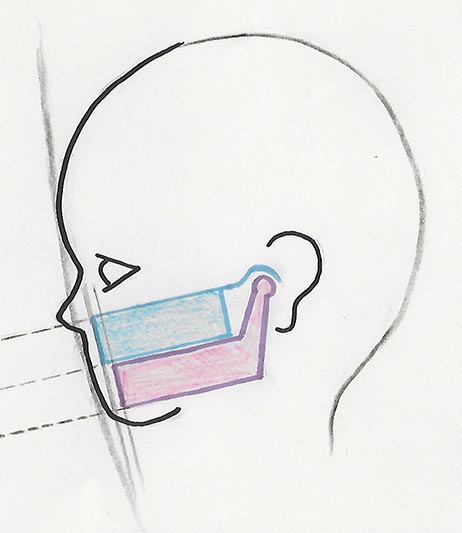
However, in a previous prospective longitudinal study spanning 12 years, we showed that about half of such children had good cognitive development but retained phonatory disorders, especially hypernasality. In contrast, those with isolated PRS or PRS associated with Stickler syndrome have good cognitive prognosis. Nearly half of children with PRS also have associated malformations resulting in syndromic PRS often affecting their cognitive development. In PRS with CP, one or two-stage primary surgery, according to the surgical team and the CP width, is performed between age 6 and 18 months. Patients usually improve progressively during the first 2 years of life. In the Paris hospital protocol, this latter management comprises prone positioning, continuous positive airway pressure, nasopharyngeal tube insertion, or tracheostomy according to case severity. Because of these functional disorders, the first year for an infant with PRS is marked by many burdensome medical necessities, such as prolonged hospitalization, mother/child separation, nasogastric or gastrostomy tube feeding and management of upper airway obstruction. Neonates with PRS exhibit breathing and feeding issues, including upper airway obstruction due to the posterior position of the tongue and to glossopharyngeal/laryngeal hypotonia sucking and swallowing difficulties and gastroesophageal reflux. A family history of PRS is present in 10% to 15% of cases, possibly involving mutations upstream of the SOX9 gene, which participates in embryonic mandible development among other roles. The pathophysiological origin of the embryonic sequence of events leading to the disorder seems heterogeneous. It associates retro(or micro)gnathia, glossoptosis, airway obstruction and frequently posterior U-shaped cleft palate (CP). Pierre Robin sequence (PRS) is a rare and complex facial malformation that occurs in approximately 1 in 10,000 births. Only non-isolated PRS and low oral QoL affected generic QoL. QoL results were lower for adolescents with non-isolated than isolated PRS. The generic QoL of the adolescents was satisfactory but slightly lower than that of controls, especially in dimensions concerning physical well-being, relationships and autonomy. The vocal QoL of the adolescents (mean VHI-9i = 7.5 ) was better than that of patients with other voice pathologies and better when phonation was good. The oral QoL of the adolescents with non-isolated PRS was significantly worse (COHIP-SF19 = 24.2) than that of control patients and close to that of children with other craniofacial malformations. The oral QoL of these adolescents was comparable to that of control patients and was significantly better than that of children with other craniofacial malformations (COHIP-SF19 = 17.5, 15.4 and 25.7, respectively). Only one vs two-stage surgery seemed to affect final aesthetic results. For 14%, morphological results were considered disharmonious, with no link to neonatal retrognathia severity. Two-thirds of our adolescents retained low or moderate phonation difficulties, but risk factors were not identified.

The Creative Commons Public Domain Dedication waiver ( ) applies to the data made available in this article, unless otherwise stated in a credit line to the data. If material is not included in the article's Creative Commons licence and your intended use is not permitted by statutory regulation or exceeds the permitted use, you will need to obtain permission directly from the copyright holder.

The images or other third party material in this article are included in the article's Creative Commons licence, unless indicated otherwise in a credit line to the material. Open AccessThis article is licensed under a Creative Commons Attribution 4.0 International License, which permits use, sharing, adaptation, distribution and reproduction in any medium or format, as long as you give appropriate credit to the original author(s) and the source, provide a link to the Creative Commons licence, and indicate if changes were made.


 0 kommentar(er)
0 kommentar(er)
